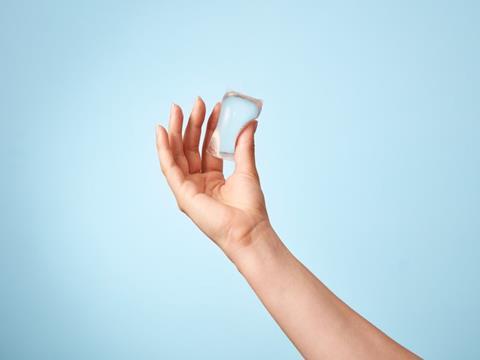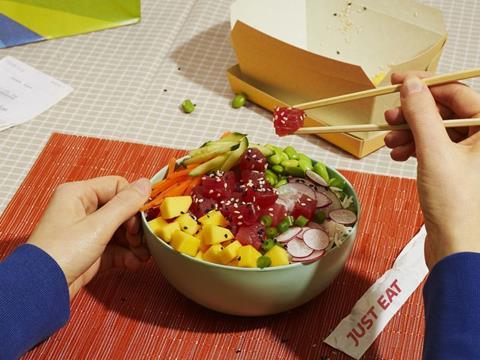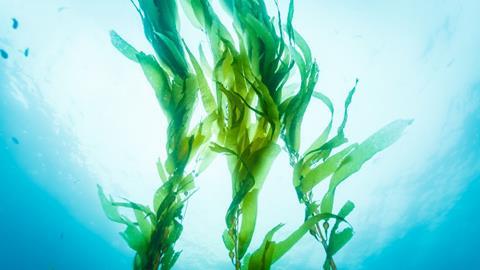SYSTEMIQ set up the Seaweed for Europe coalition in June 2020 to advance and scale a sustainable and innovative seaweed industry in Europe. Packaging Europe takes an in-depth look at the sustainability potential a growing seaweed industry could have for the packaging industry and beyond.
The coalition has three main objectives. Firstly, the aim is to drive systematic innovation and best practice sharing, as Adrien Vincent, programme director at Seaweed for Europe, points out.
“We take a value chain approach to understanding specific research and technology needs which will propel the industry towards growth. The coalition aims to determine specific intervention points within the value chain where innovation is essential, for example to bring down price points to make products competitive. We also foster knowledge exchange and best practice sharing between our members.”
The second goal is to mobilize investment and to get policy makers on board. “We connect innovative industry players with investors who are interested in contributing to the development of a sustainable ocean economy, to help them understand their respective needs and create new opportunities for investment. We also engage with policy makers to create the right conditions to make investments more attractive in the seaweed space.”
Thirdly, Seaweed for Europe engages with high-level decision makers to elevate the profile of seaweed and create awareness of its potential and the importance of pursuing this opportunity to protect human and planetary boundaries.
“Today, the coalition is comprised of 46 members from 12 European countries. They constitute a balanced portfolio of members, representing seaweed farmers, harvesters, processors, technology providers, investors, incubators, think tanks, NGOs and research institutions.”
Scaling up
Discussing this topic with several innovative players in Europe, Seaweed for Europe realized many of the conditions required to really scale up seaweed in Europe are already given, such as biological conditions for the water, favourable political support with the European Green Deal, and mushrooming of ventures in the field.
“However, at the same time the industry is still struggling to grow, despite an increasing demand for seaweed and seaweed-based products, in particular in the human consumption space. This is due to the fragmented European seaweed landscape, with stakeholders failing to pool together their know-how and experiences to drive growth jointly. In addition, there is also a lack of investment and policy support as the significant potential of seaweed is overlooked or not understood. Seaweed for Europe aims to address that,” Mr Vincent adds.
Why seaweed?
The seaweed industry in Europe represents a remarkable economic, social and environmental opportunity. A recently published report by Seaweed for Europe, anticipating the potential scope of the European seaweed industry in 2030, says that the industry “has the potential to be worth up to €9.3 billion. Under the right conditions, European producers could capture around one-third of this market (€2.7 billion), generating 115,000 jobs. In addition, seaweed could mitigate up to 5.4 million tonnes of CO2 emissions annually, remove thousands of tonnes of nitrogen and phosphorus each year from eutrophied European coastal waters, contribute to preserving biodiversity, and help protect European coasts from erosion.”
Seaweed is very viable on an industrial scale, as there is an opportunity for a significant increase in seaweed farming as well as processing capacity, as Mr Vincent points out.
“It is important to distinguish harvesting of wild seaweed and seaweed farming. The former consists of harvesting seaweed from natural underwater forests and doing so in a way that allows for the resource to regrow naturally. Today, 99% of European seaweed production is harvested from the wild, but this part of the industry has been plateauing for the past decade.”
The future of European production therefore has to come from seaweed farming, i.e. seaweed grown on ropes or nets in the water, using seaweed ‘spores’ grown in a hatchery, Mr Vincent says.
“European waters are perfectly suited to grow much more seaweed through such farms than is the case today. The farms can be constructed at a coastal level, for instance in a symbiotic way with existing aquaculture operations and facilities for salmon or shellfish, but there is increasing research and even pilots for offshore, large scale seaweed farms that could also provide large supply of raw materials, and in some cases even integrate with windfarms.”
There is also potential for industrial scale processing of seaweed. “Through the creation of integrated biorefineries producing multiple seaweed-derived products, cost-competitive production of a range of products, including biopolymers, can be enabled.”
For example, Oceanium has developed a proprietary ‘green and clean’ biorefinery technology to process seaweed into high-demand products including plant-based food and nutrition ingredients and ‘home-compostable, marine-safe’ bio-packaging. Oceanium’s mission is to enable the nascent seaweed farming industry and pioneer the development of a new, environmentally-friendly aquaculture industry in Europe and on a global level.
Seaweed for packaging
In recent months, a range of demo products and proof-of-concepts have shown the potential for packaging created on the basis of seaweed.
“Compared to many other bioplastics created using land-based materials, seaweed packaging does not give rise to competition for land vs food provisioning. It does not need freshwater nor fertilizer nor pesticides to grow and contributes to restoring ocean ecosystems health. It is possible to develop sustainable packaging materials out of seaweed that is edible and/or truly biodegradable as well as home compostable, which sets it apart from other bioplastics that claim biodegradability, but need to be processed in industrial composters to be properly treated,” says Mr Vincent.

Notpla uses seaweed as the base for a range of packaging products, including its Ooho bubbles for liquids, and the Notpla biodegradable coatings for takeaway boxes.
“Oohos are flexible packages for beverages and sauces. They’re made from seaweed and plant extracts with a capacity between 10 and 100 ml, and are even edible. They can also be discarded with food or normal rubbish, and if they do end up in the environment, they will biodegrade in under six weeks. We recently launched our second product, a coating for paperboard, and had successful trials with online delivery service Just Eat,” explains Pierre Paslier, co-founder of packaging start-up Notpla.
“With Ooho, we focus mainly on instant consumption activities like marathons, festivals, and takeaways. To complement our sustainability efforts, we operate on a circular economy model and only use reusable trays and crates that get washed and reused after use, so nothing is wasted. For our Ooho bubbles, we created a machine that transforms the gel-like seaweed extract into a film that then gets filled with the liquid and sealed. One of the benefits of this technology is its small, compact size, which enables local manufacturing. By working with distributed hubs that serve their local market, we can have a shorter supply chain and save on transport. Our ketchup sachets reduce CO2 emissions by 68% compared to plastic ones.”
Notpla uses seaweed both from farming and wild harvesting. “We use a lot of brown seaweed which we get from farms with good sustainability credentials. We also use some wild seaweed that is harvested in a way that doesn't do any damage to its surroundings, similarly to responsibly sourced wood from FSC certified forests. Apart from its biodegradability, another feature that sets it apart is its abundance – in the wild, certain seaweed species can grow up to a metre a day. It can also help with decarbonization efforts, as it is actually able to sequester carbon from the ocean water.”

The right material for the right application
Seaweed is not a silver bullet in packaging, but it has an important role to play in areas of on-the-go food and quick consumption.
“We are looking at requirements based on the application, rather than trying to emulate the gold standard of plastic. For example, our Notpla coating works well for takeaway food boxes, as typically they will be in contact with food just for a few hours,” says Mr Paslier.
He has high hopes for the use of seaweed within the packaging industry. “We think seaweed has even further to go. In comparison to plastic packaging, the material is under-researched. After all, plastic packaging has benefited from 70 years of R&D and has had a lot of money spent on it. If we deployed that many resources into alternative materials, I’m sure we can achieve great things.”











